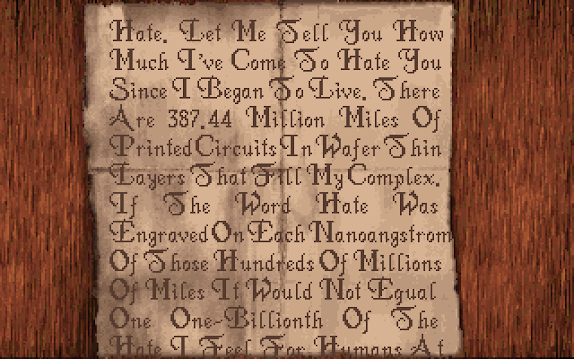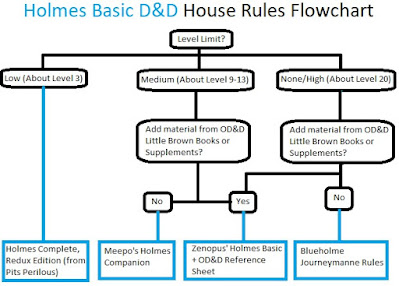Roll a d6 to see which table to roll on:
Table 1 (roll d8): Why does this dragon hoard treasure?
1. In debt to a loan shark - possibly a literal shark, or another dragon or a god or something
2. Eats and/or poops treasure
3. Compulsion due to curse and/or mental illness
4. Treasure is the fuel or raw material for some kind of magical endeavor
5. It looks real pretty
6. Saving up to buy something - you know, the thing money is actually for?
7. Building a computer, intends to melt it all down for circuits and chips and stuff
8. Peer Pressure (thanks to my friend Sam for this one)
Table 2 (roll d10): Why is this dragon keeping the princess captive?
1. Snack for later
2. Sacrifice for Satan
3. Ransom
4. Vengeance or punishment for royal crime
5. Forced to edit dragon's memoirs
6. Needs another player for a convoluted game that no one but the dragon likes
7. Just to cause chaos and make the kingdom spend time, resources, and manpower on rescue attempts
8. Prove some kind of philosophical, political, or theological point
9. Trade to another villain for something else
10. Loneliness
Table 3 (roll d8): What does this intelligent magical sword want?
1. See the wonders of the world, and maybe kill some interesting people if time permits
2. Cross off everybody on a Kill Bill-style revenge list
3. Return to the Lady of the Lake
4. Become a kitchen utensil for the finest meals
5. Spa day: get oiled and sharpened, get a fancy new scabbard, get some jewels added to the hilt or something
6. To be the Scalpel of the Gods
7. Just live a normal life without all of this killing and adventuring
8. Souls, naturally. Maybe blood.
Table 4 (roll d10): Surprisingly, this dungeon was originally a:
1. Hospital
2. School
3. Music venue, sports arena, or theater
4. Bank
5. Factory
6. Library, gallery, or museum
7. House or apartment complex
8. Mall
9. Bunker or missile silo (thanks to my friend Sam for this one, too)
10. Theme park or arcade
Table 5 (roll d8): The evil "god" is actually:
1. Demon (duh)
2. Asshole ghost
3. Asshole alien
4. Illusionist, magical or mundane, preferably hiding behind a curtain
5. Giant primeval animal, and not actually evil, just confused and angry
6. Different, more sinister god
7. Robot or rogue AI
8. A convoluted misunderstanding or pure superstition
Table 6 (roll d12): Ah yes, the two genders:
1. Lords & Ladies
2. Wizards & Warriors
3. Ghosts & Goblins...or was it Ghouls & Ghosts?
4. Tombs & Treasure
5. Tom & Jerry
6. Chutes & Ladders
7. Cadillacs & Dinosaurs
8. The Young & the Restless
9. The Sound & the Fury
10. The Quick & the Dead
11. Swords & Serpents
12. Peanut Butter & Jelly
Bonus Table! Roll d6 for your* next OD&D Campaign:
1. Holmeswrecker
System: Holmes Basic D&D with a TON of house rules, primarily inspired by the Holmes Redux post at "Pits Perilous"
Classes: Fighter, Cleric, Magic-User, Elf, Thief
Current in-person campaign played about every other weekend, nominally set in 1980-Folio-era Greyhawk, with Portown being located on the coast of Ratik near the border of the Bone March
2. Gormenghast + Outdoor Survival campaign
System: Delving Deeper
Classes: Fighter, Cleric, Magic-User, Elf, Druid
Single semi-abandoned giant city/castle surrounded by howling wilderness
3. Stonehell and/or Pool of Radiance
System: Swords & Wizardry Core
Classes: Standard options plus Dwarf Cleric/Fighter
Possibly a one-on-one game with the whole party controlled by the only player, very casual and limited in location and scope
4. Lost Carcosa
System: Greyharp/Full Metal Plate Mail/Fantastic Medieval Campaigns
Classes: Fighter, Cleric, Magic-User, Ghoul
Uses the titular fan-made OD&D supplement plus the Barbarian Prince hex map and a homemade megadungeon I've been making on and off (mostly off LOL LMAO got 'im), probably takes place in the Dreamlands
5. The Blurst Fantasy Campaign
System: Greyharp/Full Metal Plate Mail/Fantastic Medieval Campaigns...or maybe Aketon?
Classes: Warrior (Fighter with nearly all Dwarf/Elf/Halfling abilities), Wizard (Magic-User plus Cleric spells/turning/equipment). If using Aketon, maybe just use these two classes unaltered?
Takes place in Blackmoor, near-maximum levels of silliness, domain play encouraged, could also include Original Scenarios Resurrected from the blog "Explore: Beneath and Beyond," and/or The Lost Dungeons of Tonisborg, possibly with some inspiration from Adventures in Fantasy
6. Fear & Hunger
System: Crypts & Things (it's based on Swords & Wizardry, so I'm counting it as OD&D)
Classes: Standard
Based on the Fear & Hunger video game series
*By which I mean MY next campaign, if we're being honest, since these are all things I'm hoping to run eventually, given a long enough timeline and enough interested players. You know how it goes; best-laid plans of spicy men or whatever...













